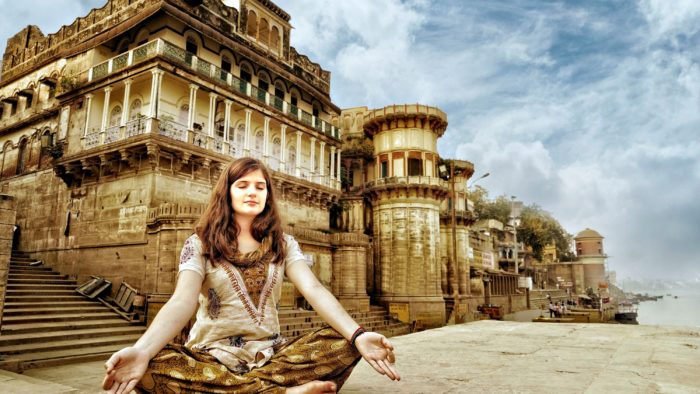Highlights of The Global Soft Power Index, published in Feb 2020:
India at the 27th position with an overall score of 41.6 out of 100, makes it the leading country in South Asia and the fourth-highest in Asia.
Peter Fisk, professor at IE Business School in Madrid, has anticipated that by 2025, New Delhi will become the world’s largest city replacing Tokyo and India will be home to the 10 fastest-growing cities in the world
Author and Director at The Nehru Centre in London Amish Tripathi remarks that India’s soft power cannot be understood fully without taking into account its millennia old civilizational heritage and knowledge traditions, which spread far and wide across the globe
The Global Soft Power Index, published in February 2020, ranks India at the 27th position with an overall score of 41.6 out of 100, making it the leading country in South Asia and the fourth-highest in Asia.
It identifies seven pillars or parameters for measuring soft power – namely – Business and Trade, International Relations, Governance, Culture and Heritage, Media and Communications, Education and Science and People and Values. The study also analysed soft power on three other metrics. These include familiarity – related to the recall value of nation brands, influence – wielded by a country both domestically and internationally, and reputation – enjoyed by each country across the world.
Beyond the aforementioned, the study also highlighted rising global trends, as articulated by domain experts. These trends are expected to play a key role in determining the soft power of countries as well as shape interactions between countries in the future. Some of these trends, particularly relevant to India’s rise as a soft power include the following.
1. Cities are the new power nodes
Peter Fisk, professor at IE Business School in Madrid, has anticipated that by 2025, New Delhi will become the world’s largest city replacing Tokyo and India will be home to the ten fastest-growing cities in the world. This creates an opportunity for city planners and government to emphasize strongly on the aspect of liveability and economic prosperity while shaping policies of urban governance. Developing resilient infrastructures, increasing accessibility and availability of public amenities and efficiently implementing smart city plans could be some measures in this direction. To further enhance liveability, city planning should also include development of more educational and cultural hubs. This will not only invite domain experts and artists to showcase their creativity but also become a source of learning and entertainment and thus improve community wellbeing.
2. Social issues are the new power drivers
Environmental concerns and the question of wellbeing will play a crucial role in determining patterns of globalization as well as domestic governance. The establishment of International Solar Alliance exemplifies India’s commitment to ecological sustainability and leadership in global governance. Besides its health impact, the recent, yet rapidly spreading COVID-19 or the n-Coronavirus has also impacted the global economy and sought to redefine international relations. India’s efforts to cooperate with SAARC nations to provide humanitarian assistance in terms of finances, medical supplies and evacuation drives reflect on India’s foreign policy values.
3. Education and Sciences
With increasing digitalization, education and innovation are experiencing a big shift in terms of learning, creativity and execution. The study identified this spur in digitization as an opportunity for investment as in the case of artificial intelligence being deployed for various purposes from geopolitics to health care in India and China.

Understanding Soft Power in the Indian Context
The Global Soft Power Index pays particular attention to tourism and efforts in the domain of cultural diplomacy. The former is highlighted through the attraction of the nation branding slogan – Incredible India, and the fact that India has the sixth-highest number of UNESCO heritage sites which range from biodiversity parks to centuries-old temples. The latter is primarily understood through the efforts of the Indian Council for Cultural Relations (ICCR), particularly its branch in the UK known as The Nehru Centre. Furthermore, the study acknowledges the role of Yoga and Bollywood as the most visible forms of India’s soft power presence across the world. These factors have contributed towards India’s familiarity score at 6.8 to be the highest amongst the three key measures, the other two being reputation (6.0) and influence (4.5).
While the caveat that this study was largely based on people’s perception derived from a limited sample size is maintained, it missed out on certain facets that are intrinsic to understand Indian soft power.
First, Indian soft power goes beyond the initiatives of ICCR and the Ministry of Tourism and includes various other stakeholders. State governments’ efforts in promoting local culture as well as inviting global investments play an equally important role. This was evidenced in the case of Uttar Pradesh (UP), when the government successfully organized the Kumbh Mela in 2019, inviting more than 200 international visitors to experience India’s cultural heritage. In 2018, the UP government had also welcomed the queen of South Korea to celebrate Diwali in Ayodhya, the land of her ancestors, thus rekindling the centuries old civilizational connection between the two countries. In the same year Samsung, a South Korean mobile giant had opened the ‘world’s largest mobile factory’ in UP's Noida city, giving a major boost to economic ties.
Second, while Indian soft power is most evidently manifested through Bollywood and Yoga, it is by no means limited to it. Indian cuisine, with immense health benefits and wisdom of Ayurveda, are increasingly gaining recognition. A case in point is turmeric latte, a popular beverage sold in coffee shops around the world. This beverage is a modified version of Haldi doodh, a centuries old recipe believed to have healing properties that is consumed till date in India. Crafts and textiles, especially Khadi, are also witnessing a rise in global popularity. However, the full potential of these and many other aspects of Indian soft power, including performing arts and literature, remains untapped, thus opening new avenues and opportunities.
Third, the opprobrium on Indian government’s decision to nullify the provisions of Article 370 of the Indian Constitution, needs close examination. The remarks seem to be based on a limited understanding of the historical background and complexities involved in the erstwhile Indian state of Jammu & Kashmir. They also seem to ignore the fact that internal security and national integration are equally important as soft power.
More importantly, the remarks completely miss the fact that as a consequence of rescinding the barrier-like special provisions, progressive reforms can finally be ushered in this part of the country. The government's decision can now ensure gender equality as well as rights to women to inherit property irrespective of their marriage, something that wasn't possible previously. Moreover, private universities can also establish campuses in this region now, thus improving the quality of education and skills. Policies and measures to promote local culture especially through handicrafts, tourism and horticulture have also been designed and being implemented. While the process of complete integration and economic rejuvenation will take its time, the government's move in August 2019 is a welcome step in promoting sociocultural and economic development, which the Global Soft Power Index fails to take into consideration.
Fourth, India’s soft power cannot be understood fully without taking into account its millennia old civilizational heritage and knowledge traditions, which spread far and wide across the globe. This point was duly addressed in special commentaries. Amish Tripathi, Author and Director at The Nehru Centre in London, delved further into this by quoting the works of an Economic Historian Angus Madison who had posited that Indian economy had accounted for 30 percent of the global GDP in the 1st millennium CE. This also led to strong networks of trade, enabled by the sea routes of Indo-Pacific and land routes in the North. The close civilizational linkages between India and Southeast Asia or the spread of Buddhism from India across the globe indicate how trade was accompanied by exchange of culture and values.
The land of India, or Bharata, was also home to some of the oldest and greatest universities, with Takshashila and Nalanda being the most prominent ones, inviting scholars from various other cultures. India’s ancient wisdom holds relevance till date and has made important contributions in the world such as in the field of arts, governance and sciences. The Fibonacci series being attributed as the ‘Indian series’ by Fibonacci himself or the innovation of zero in the field of mathematics, surgery and Ayurveda in the field of medicine and Sanskrit and Natyashastra in the field of arts and culture are some of the innumerable examples of India’s ancient wisdom.
Indian soft power is a myriad of cultural expressions, social values and a lived reality of millennia-old civilization. The practice and belief in ideals of democracy, pluralism and rule of law is not just reflected in its domestic governance but foreign policy conduct as well. India’s humanitarian aid to its neighbours like Afghanistan and Maldives to strengthen democracy and help in socioeconomic development is an illustration of the same.
Furthermore, India’s diaspora population, accounted to be the largest in the world, can serve as consumers and exporters of Indian soft power across the globe. However, concerted efforts are needed to tap into the potential of its diaspora and also increase the recall value of its brand, including its long-standing strengths in Yoga and Bollywood. India is the sixth-largest economy and the largest democracy in the world as well as home to several technological innovations. With a well-crafted policy approach, and a strong vision deeply rooted in its civilizational ethos and in tandem with global undercurrents, India is poised to become a leading soft power.
An initiative by UK-based consultancy Brand Finance, this study documents key trends, insights and opinions of over 55,000 people in more than 100 countries. The highest number of interviews, at 1241, were conducted in India followed by 1233 in China and 1210 in the United States of America (USA). Of the 100 countries studied, the United States of America (US) ranked number one, followed by Germany and the United Kingdom (UK).
The Global Soft Power Index report can be accessed here: https://brandirectory.com/globalsoftpower/
(Cover pic by Manish Khattry)





